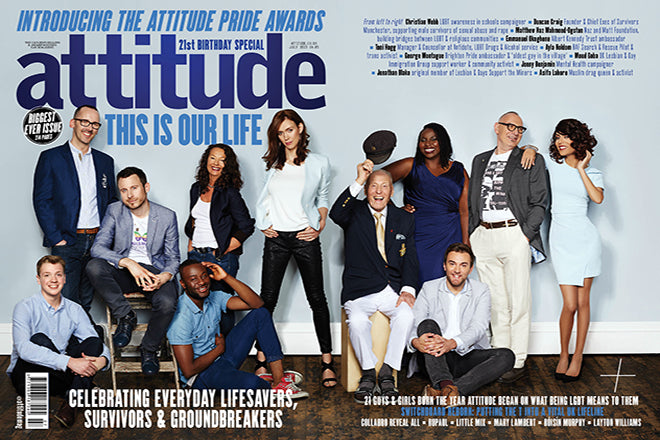
Attitude’s 21st anniversary
On Friday, Attitude will be celebrating its 21st anniversary. The gay lifestyle magazine will be holding an ‘Attitude Pride Awards’ ceremony in London to pay tribute to those who make a difference in the LGBT community, and they’ve also just released a whopping 214-page issue as part of the celebrations.
In many ways, Attitude is not just a magazine: it’s been an important political and social voice throughout the years, helping to redefine representations of LGBT people in the mainstream media. They’re extremely politically active, and were the only consumer publication to get interviews with all party leaders for the last general election.
Attitude’s commitment to sexual equality is unprecedented in the world of mainstream magazines. They’re also well versed in getting a scoop, and have boasted hundreds of cover stars, from politicians and sports players, to pop stars and TV personalities. We caught up with editor Matthew Todd to hear more about the magazine’s history and upcoming celebrations. Happy birthday Attitude!
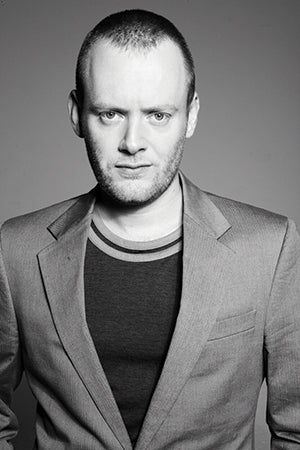
What changes have you seen in the media representation of LGBT people since Attitude began 21 years ago?
Oh my goodness, it’s been unquantifiable. The media homophobia of the 80s was ferocious and so much has changed now. It’s not perfect by any means, and there’s still a way to go, but we were ignored and attacked before so there’s noticeable progression. We are included more now. There are gay people working in the media, which is great, and it means their colleagues actually understand we are not aliens from another planet like they did in the 80s.
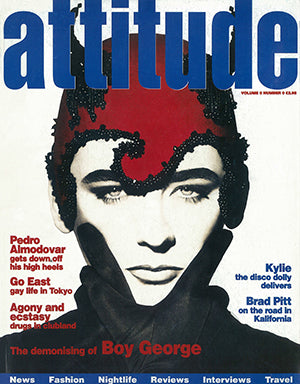
How has Attitude recorded – and also spearheaded – these changes since its launch?
I think we’ve contributed to the discussion about many of these issues. It’s important to have a magazine that speaks directly to gay people. I also think we’ve helped change some of the mainstream media.
Attitude has been a commercial magazine that has spoken the language of the rest of the media and so given straight media professionals a way in to understanding gay issues. The media often runs reports on our cover stars, which has played a small part in normalising gay culture.
The thing I’m most proud of is that we depict and reflect gay relationships. We run a monthly dating page, content about relationships and a page called Truly, Madly, Deeply every month that shows a long-term couple discussing their relationship. You don’t see that anywhere else in mainstream or indeed gay culture. It sounds silly but the readers love it.
You’ve featured figures from all across the political spectrum. What does this add to the magazine?
Our biggest political coup was having Tony Blair on the cover in 2005, which was the first time a serving Prime Minister has ever given an interview to a gay publication. At the last election, The Guardian ran a piece noting that we were the only publication that had an interview with all the major leaders.
Even though David Cameron brought in gay marriage, many people overlook the fact that more than 50% of Tory MPs voted against it. That said, it’s been great to reflect that many gay people do vote for the Tory party and certainly the party is less homophobic than it used to be. When we interviewed Michael Howard in 2005, he was very cagey with his answers. He didn’t sound comfortable giving a gay magazine an interview at all.
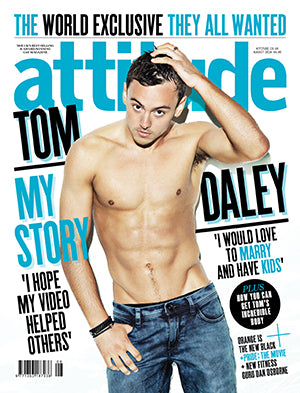
What do you look for in a cover star?
This is the trickiest part of my job. As a gay magazine a fundamental part of the reason people buy us are for political/community reasons but, as with all commercial products, especially magazines, sex sells and so the covers that do well are generally the sexier, shirtless ones.

We mix it up, though it can be hard to get it right. I think we do a good job featuring cultural figures; I’ve made a point of being more diverse. Under my editorship, I’m pleased to say we’ve had our first (and second) lesbian cover stars, the first out black gay guy on a cover, the first gay Muslim man on the cover and more. The new issue has 11 non-celebrity community heroes on the cover.
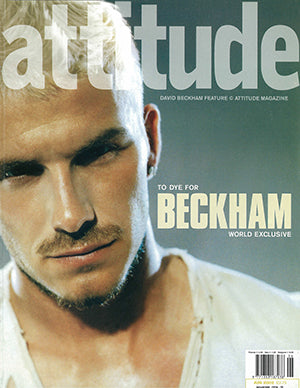
Who has been your favourite cover shoot over the 21 years and why?
David Beckham was amazing – the first time a heterosexual footballer – and the captain of the England, team no less – had appeared on the cover of a gay magazine. He is an icon of modern masculinity and so it was a real moment, a signal to the country that it was OK to be OK with gay people.

I loved getting Daniel Radcliffe, the star of the biggest family brand in the world, to give us his first gay press interview. I also loved our Stonewall anti-homophobic bullying covers with Sir Ian McKellen and Alan Carr. That was fun to do.
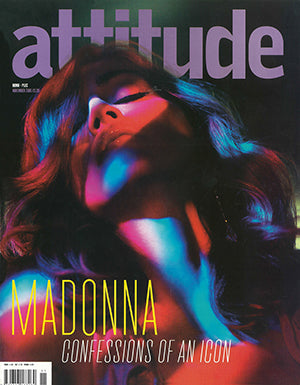
Can you pick a few of your most memorable moments from working at Attitude?
Meeting Madonna was incredible. She was my idol when I was a teenager and I got to spend 90 minutes alone in a loft studio with her. She said it was her favourite interview in ten years so that was kind of surreal for me. Seeing our Attitude Awards event become such a success has been very rewarding. It’s great that the country gets to see mainstream celebrities like Carrie Fisher, Cher, Jonathan Ross, Danny Dyer and Ellie Goulding among others all coming together to celebrate the LGBT community.
The most rewarding part though is being able to meet people doing amazing things in the community or when people tell me that Attitude was the only place that they learnt about HIV and safe sex, as one young man recently did. It’s scandalous that there is not better sex education in schools but it’s good to know some of those messages get out there through what we do.
How will you be celebrating the magazine’s 21st birthday?
We’re throwing our inaugural Attitude Pride Awards and 21st birthday party at the Grosvenor House Hotel on the night before Pride. The awards celebrate the unsung everyday heroes of the LGBT community, and our new issue featuring their stories is out now. Alan Cumming is hosting and I don’t think there will be a dry eye in the house.


